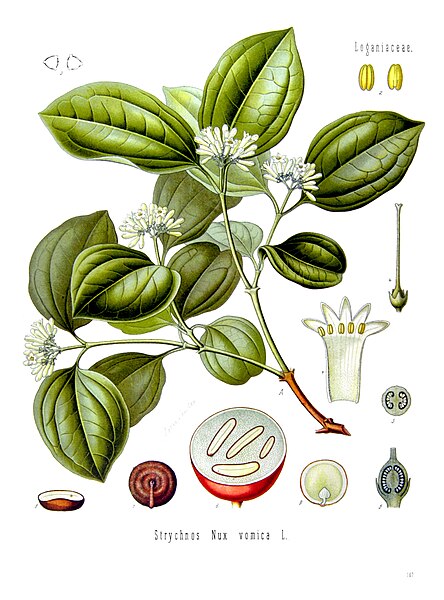Theobromine, also known as xantheose, is the principal alkaloid of Theobroma cacao. Theobromine is slightly water-soluble (330 mg/L) with a bitter taste. In industry, theobromine is used as an additive and precursor to some cosmetics. It is found in chocolate, as well as in a number of other foods, including the leaves of the tea plant, and the kola nut. It is a white or colourless solid, but commercial samples can appear yellowish.
A chocolate bar and molten chocolate. Chocolate is made from the cocoa bean, which is a natural source of theobromine.
Alkaloids are a class of basic, naturally occurring organic compounds that contain at least one nitrogen atom. This group also includes some related compounds with neutral and even weakly acidic properties. Some synthetic compounds of similar structure may also be termed alkaloids. In addition to carbon, hydrogen and nitrogen, alkaloids may also contain oxygen or sulfur. More rarely still, they may contain elements such as phosphorus, chlorine, and bromine.
The first individual alkaloid, morphine, was isolated in 1804 from the opium poppy (Papaver somniferum).
Friedrich Sertürner, the German chemist who first isolated morphine from opium.
Strychnine tree. Its seeds are rich in strychnine and brucine.
Crystals of piperine extracted from black pepper.





